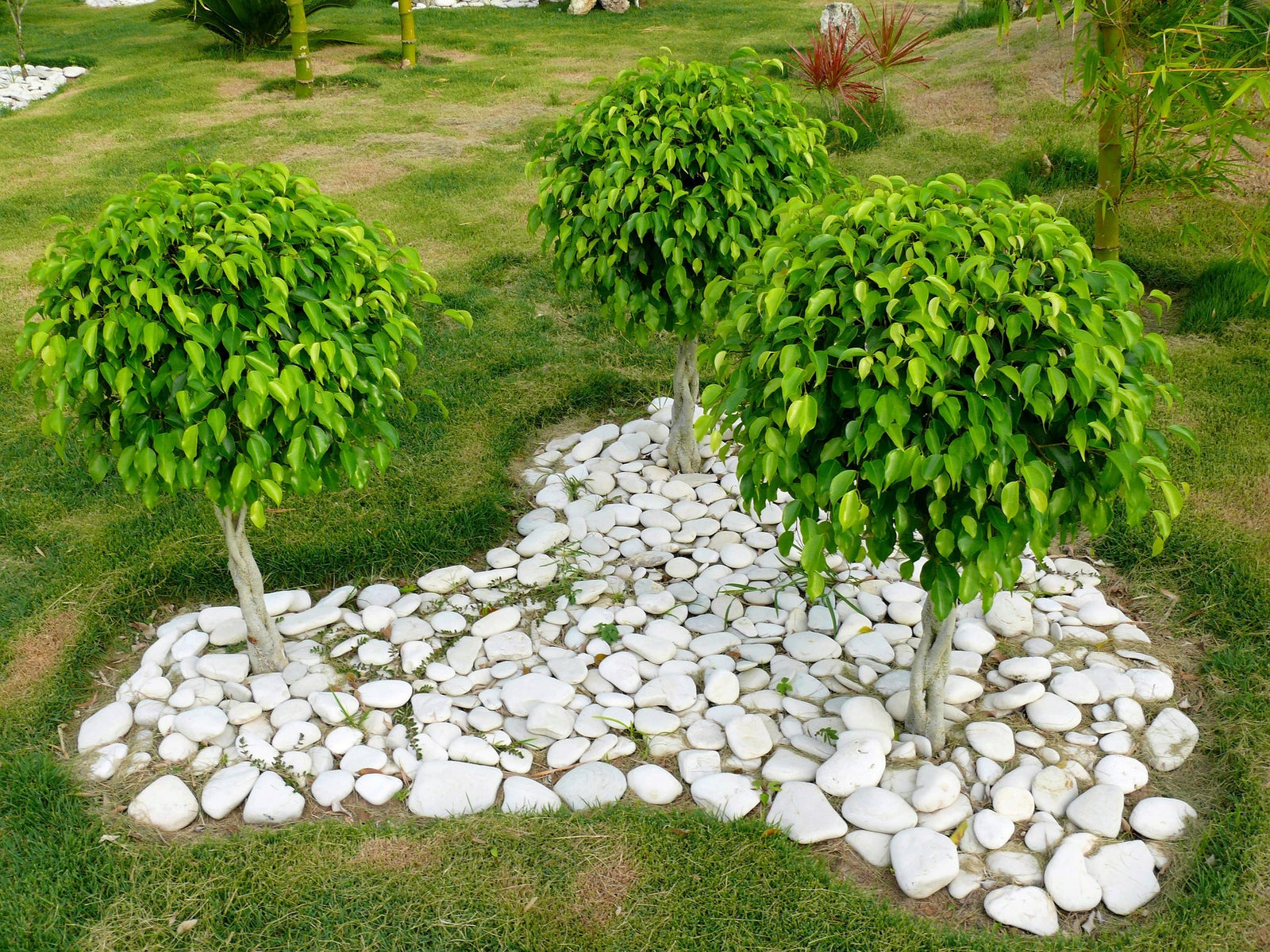Your Cart is Empty
Ficus Benjamina (Weeping Fig) is one of the most popular indoor plants, known for its ability to effectively remove gaseous formaldehyde in the air. It is also a prevalent hedge plant for homeowners, due to its ability to provide privacy through its deep green leaves and dense foliage (a hardiness zone of 10-11 according to the USDA).
A Ficus tree in natural conditions develops highly aggressive root systems and its height can reach up to around 100 ft. It is tolerant against unfavorable growing conditions, but regular pruning is necessary in order to moderate its high growth rate. While not frequent, regular watering is necessary to keep it healthy and less prone to diseases and infestations. It is relatively shade tolerant, but will not grow full, green foliage if it is not exposed to enough sunlight. Something to keep in mind when taking care of a Ficus is that it does not adapt well to the cold, so cold drafts should be avoided if possible.
Don’t panic if you spot your Ficus dropping its leaves! Ficus leaves drop when it’s dry-season, or when growing conditions are changed (e.g. watering, lighting, pests). Once conditions become favorable again, new leaf growth will occur.
When under dry conditions, Ficus plants drop leaves to reduce the necessity of water demands. Alternatively, when loss of leaves occurs due to reduction of light, the plant should be moved to a sunny area. Loss of leaves can also occur when the Ficus is infested with pathogenic insects or fungal disease. Insects commonly spotted on Ficus are spider mites, mealybugs, and white flies. The recommended way to control these insects is to check the plant regularly – either weekly or biweekly to see if the plant shows unusual signs such as curling of the leaves, noticeable leaf dropping, or yellowing. If you suspect an insect infestation, the best way to control it is to spray soap water on the underside of the leaves repeatedly with a 7-10 day interval between sprays, or to simply knock off the insects or larvae with hose-watering. This way, you can control the infestation without also harming or killing beneficial insects that feast on pathogenic insects and can contribute to healthy growing of your plant. Commercial insecticidal soap or oil sprays such as neem oil can also be effective, but repeated applications can prove to be a financial burden to plant owners due to their high cost. Chemical insecticides are also effective, unless the insects on your plants have already adapted to the chemical. You should exercise caution when using chemicals, however, as most chemicals are also fatal to beneficial insects, and should only be used in the most urgent cases! Many chemical products contain Bifethrin, Cyfluthrin, Carbaryl, Cyfluthrin, or Imidacloprid, etc.- most of which are harmful to beneficial life, with some even being categorized as carcinogenic for humans by the EPA (United States Environmental Protection Agency). But most importantly, repeated chemical applications will eradicate many pests, but leave behind some pathogenic insects that will adapt and proliferate at an exponential speed. All in all, chemicals should be avoided if possible and utilized, if any, in only the most dire cases.

(Ficus Hedge heavily infested with White Flies)
On the other hand, fungal diseases such as leaf spot, anthracnose, botrytis blight, rhizoctonia root rot, southern blight, etc. are also scary threats to Ficus plants. These fungal diseases manifest similar symptoms, and it is not easy for regular home gardeners to differentiate one disease from another. Regardless, it is useful to keep in mind a few common conditions that encourage an outbreak of fungal pathogen: cool & damp weather, wet & hot temperatures, water-saturated soil, and pruning with contaminated trimmers. There are a handful of chemical fungicides out there- Camelot, CuPro, Junction, Protect, Dithane, Chipco, Empress, Clearly, Medallion, just to name a few. However, recent trends in regenerative farming point to applying organic agents that either enhance plant root systems to enable them to fight off disease, or also directly kill fungal pathogens. An example of this would be the use of Chitinase enzyme, an enzyme produced by Trichoderma fungi. Another example would be Rhizobacteria, such as Bacillus spp., which would grow robust root systems capable of fending off fungal diseases. These are methods already introduced to regenerative farming communities, and it’s time they’re also introduced to home & commercial gardening.
Mikrobs contains Rhizobacteria, Trichoderma as well as other organic elements (humic/fulvic acid, amino acid, kelp extract) that benefit soils and plants. Mikrobs not only promotes plant growth, but also provides protection from biotic and abiotic threats. It is an effective solution for healthy organic growing. Give healthy and organic growing with Mikrobs a try!

Comments will be approved before showing up.
